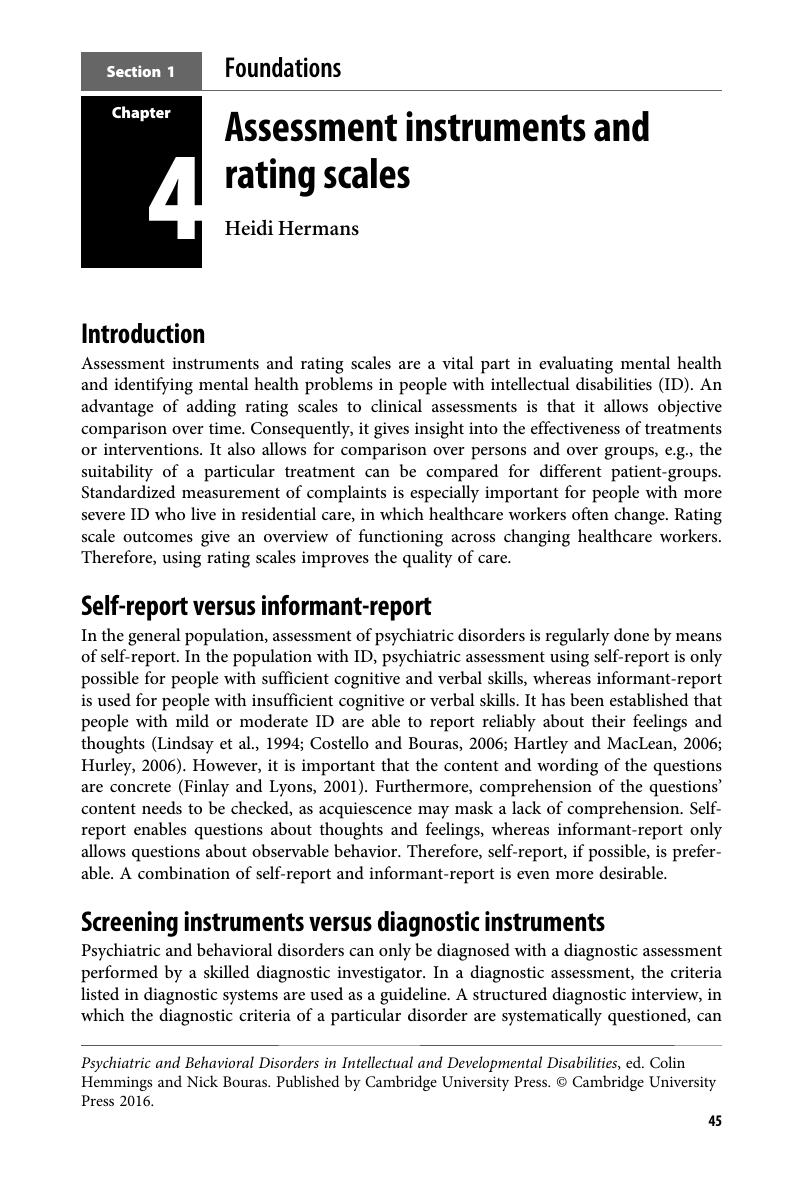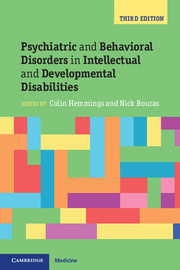Book contents
- Psychiatric and Behavioral Disorders in Intellectual and Developmental DisabilitiesThird Edition
- Psychiatric and Behavioral Disorders in Intellectual and Developmental Disabilities
- Copyright page
- Contents
- Contributors
- Preface
- Section 1 Foundations
- Chapter 1 Historical and international perspectives of services
- Chapter 2 Classification and diagnosis
- Chapter 3 The epidemiology of psychiatric disorders in adults with intellectual disabilities
- Chapter 4 Assessment instruments and rating scales
- Section 2 Mental disorders
- Section 3 Interventions
- Section 4 Special topics
- Section 5 Services
- Section 6 Reflections
- Index
- References
Chapter 4 - Assessment instruments and rating scales
from Section 1 - Foundations
Published online by Cambridge University Press: 05 March 2016
- Psychiatric and Behavioral Disorders in Intellectual and Developmental DisabilitiesThird Edition
- Psychiatric and Behavioral Disorders in Intellectual and Developmental Disabilities
- Copyright page
- Contents
- Contributors
- Preface
- Section 1 Foundations
- Chapter 1 Historical and international perspectives of services
- Chapter 2 Classification and diagnosis
- Chapter 3 The epidemiology of psychiatric disorders in adults with intellectual disabilities
- Chapter 4 Assessment instruments and rating scales
- Section 2 Mental disorders
- Section 3 Interventions
- Section 4 Special topics
- Section 5 Services
- Section 6 Reflections
- Index
- References
Summary

Information
- Type
- Chapter
- Information
- Publisher: Cambridge University PressPrint publication year: 2016
References
Accessibility standard: Unknown
Why this information is here
This section outlines the accessibility features of this content - including support for screen readers, full keyboard navigation and high-contrast display options. This may not be relevant for you.Accessibility Information
- 1
- Cited by
